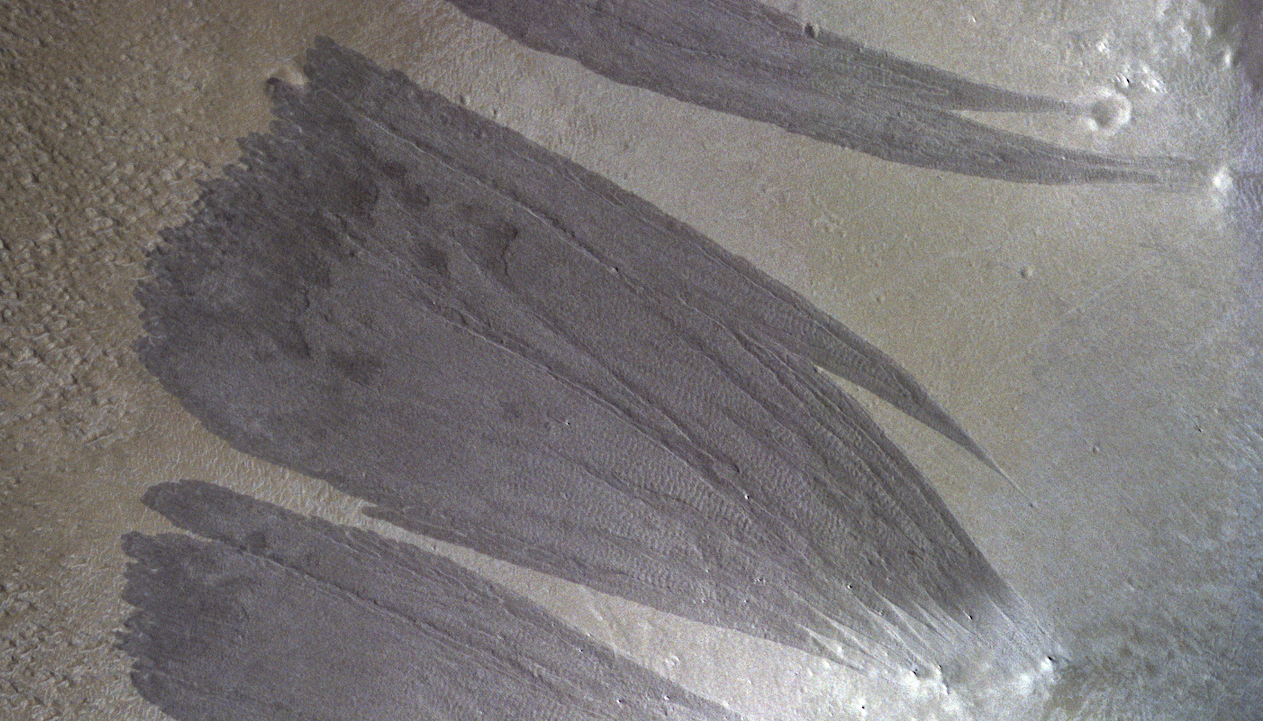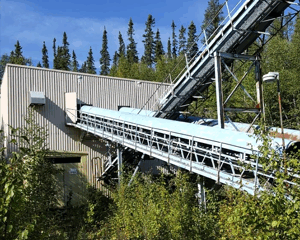Science
Mars Observed: Detailed Imaging Reveals Dust Avalanche Dynamics

Recent observations of Mars have unveiled the intricate dynamics of dust avalanches, offering new insights into the planet’s geological activity. High-resolution imaging from low sunlight angles has revealed distinct topographic signatures on steep slopes covered in dust. These streaks, typically appearing as mere dark stains under direct sunlight, are now understood to indicate significant surface material movement.
When viewed from a high vantage point, the dark slope streaks on Mars become more than just atmospheric anomalies. The latest imaging techniques have allowed scientists to analyze the movement of surface material, confirming that material is consistently removed from upper slopes and deposited in lobes, characteristic of landslide behavior, also referred to as “mass movements.”
Insights from Recent Imaging Techniques
The advancement in imaging technology has played a crucial role in this discovery. By capturing images at low sun angles, researchers can discern subtle features that are typically obscured in bright sunlight. This enhanced visibility allows for a more comprehensive understanding of the processes at play on the Martian surface. The findings suggest that the planet experiences ongoing geological processes, which could provide essential clues about its past and potential for supporting life.
The implications of these findings extend beyond academic interest. Understanding the behavior of dust avalanches on Mars can inform future exploration missions. It aids scientists in identifying stable landing zones and assessing the risks of surface movement, which is critical for the safety of rovers and landers exploring the Martian terrain.
Broader Implications for Mars Research
These observations also contribute to the fields of astrobiology and astrogeology. As scientists continue to unravel the complexities of Mars’ surface dynamics, they gain insights into the planet’s history and its capacity to host life. The movement of material can indicate past climatic conditions, offering a glimpse into how Mars has changed over time.
Research into Martian dust avalanches aligns with ongoing discussions regarding the planet’s potential for future human exploration. The findings underscore the need for careful consideration of surface conditions, which are influenced by both geological and atmospheric factors. As exploration efforts intensify, understanding these processes will be vital for ensuring the success of missions aimed at uncovering the mysteries of Mars.
In summary, the recent high-resolution imaging of dust avalanches on Mars not only enhances our understanding of the planet’s geological activity but also has significant implications for future research and exploration. By revealing the dynamics of surface material movement, scientists are one step closer to piecing together the puzzle of Mars’ past and its potential to support life.
-

 Science1 month ago
Science1 month agoUniversity of Hawaiʻi Leads $25M AI Project to Monitor Natural Disasters
-

 Science2 months ago
Science2 months agoInterstellar Object 3I/ATLAS Emits Unique Metal Alloy, Says Scientist
-

 Science2 months ago
Science2 months agoResearchers Achieve Fastest Genome Sequencing in Under Four Hours
-

 Business2 months ago
Business2 months agoIconic Sand Dollar Social Club Listed for $3 Million in Folly Beach
-

 Politics2 months ago
Politics2 months agoAfghan Refugee Detained by ICE After Asylum Hearing in New York
-

 Business2 months ago
Business2 months agoMcEwen Inc. Secures Tartan Lake Gold Mine Through Acquisition
-

 Health2 months ago
Health2 months agoPeptilogics Secures $78 Million to Combat Prosthetic Joint Infections
-

 Lifestyle2 months ago
Lifestyle2 months agoJump for Good: San Clemente Pier Fundraiser Allows Legal Leaps
-

 Health2 months ago
Health2 months agoResearcher Uncovers Zika Virus Pathway to Placenta Using Nanotubes
-

 Entertainment2 months ago
Entertainment2 months agoJennifer Lopez Addresses A-Rod Split in Candid Interview
-

 World2 months ago
World2 months agoUS Passport Ranks Drop Out of Top 10 for First Time Ever
-

 Business2 months ago
Business2 months agoSan Jose High-Rise Faces Foreclosure Over $182.5 Million Loan










